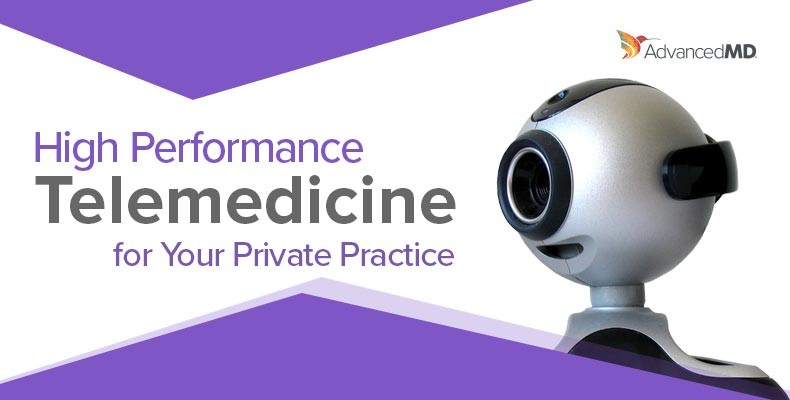
Telemedicine is becoming more and more important to the USA’s healthcare system. With demand for doctors under strain due to a swelling population and longer lifespans, providing the public with remote consultations and self-care tools is a powerful solution.
According to the American Health Association, 74 percent of Americans would be happy to use telemedicine services. 76 percent also prioritize access to care itself over face-to-face interaction with a medical professional.
With Internet connectivity affordable enough for most budgets, and mobile technology powering real-time service-delivery, the average consumer can receive much-needed help at any time, any place. Across the country, bills are regularly being passed into law regarding telemedicine, allowing the population greater access to faster, more convenient consultations. In 2015, all except eight states introduced a minimum of one telehealth-related bill, with more than 200 floated in total.
This is hardly surprising, given the greater convenience telemedicine offers physicians and patients alike. The complications and hassle of making time to visit the local practice or hospital is removed, and for minor complaints with no need for physical examination, telemedicine is a much more streamlined process.
Implementing telemedicine technology may carry a significant monetary value at first, but over time it can increase revenue and save you money.
Cutting the Number of Wasted Appointments
Every minute counts at a busy practice. Each appointment has the potential to change a patient’s life, even if it is as simple as setting their mind at ease over a lump or persistent cough.
Whenever an individual fails to arrive for their appointment, without calling ahead to cancel or reschedule, this causes significant inconvenience for physicians. It is a waste of time which could be invested into another patient’s care.
Imagine a mother of three has an appointment scheduled at her local clinic. She has developed a strange rash in the past couple of weeks, and wants to get it checked out. Her consultation is scheduled for a Thursday afternoon, but the school calls saying one of her children is sick. The mother collects them from school, and neglects to call the clinic to cancel her appointment.
In the ten or fifteen minutes the doctor has penciled in for this meeting, he or she is now left waiting. Perhaps they have had to refuse another patient’s request for an appointment. Perhaps they could be helping a colleague with an important issue. Now imagine that this happens multiple times a week. This is valuable time you will never get back.
This is also wasted money, with overheads and resources uncovered by unbilled time.
With telemedicine, however, this busy mother could have the doctor look at her rash via a video call. This may only take a few minutes, and she would still be able to collect her sick child with a minimum of delay. She will be billed for her consultation, and the physician can still accommodate another patient in a short space of time.
Recapturing Valuable Billable Time and Increase Patient Flow
Telemedicine has the power to optimize your billable time and boost the flow of patients. Many providers of telemedicine systems will actually arrange your scheduled appointments in a queue, creating a constant flow of remote consultations alongside your face-to-face meetings.
Imagine you’re in your office all day, with eight appointments scheduled. Six are remote, and two are in-person. Imagine the latter pair fail to show.
This is two hits of unbilled time.
However, the convenience of telemedicine makes it far more likely that your remote patients will call in on time. Any no-shows can be substituted for virtual meetings, perhaps for patients who may have requested an appointment unsuccessfully earlier in the day. This allows you to recapture revenue you would otherwise have lost through the aforementioned no-shows.
Telemedicine also increases patient flow, streamlining the consultations themselves without having to wait for people running late. If a patient is satisfied with a fast, efficient remote consultation, they will be more likely to return again and again. Retaining patients is an obvious boon to your practice, securing future custom.
Attracting New Patients
As the AHA’s research shows, the majority of Americans surveyed would be more than happy to try telemedicine for minor ailments. It goes without saying that physical examinations must be prioritized for pressing matters, but remote care is an ideal solution for meeting the demand of today’s expanding population and busy lifestyles.
By offering a convenient, hassle-free process, your practice is more likely to attract new customers from competitors which stick to a traditional structure. Accessibility and willingness to move with the times may also prompt patients to pay more for your service. A gradual, subtle increase of prices will be welcomed by patients who are seeing a real improvement in the quality of the care available.
Provide Easier Out-of-Hours Appointments and After-care
You may feel obligated to provide out-of-hours service, discussing problems with patients over the phone, but this is generally unbilled. With telemedicine, you can provide check-ups and brief consultations for a fair price, transforming those urgent (but often minor) calls into extra revenue-boosting opportunities. This benefits clients by providing greater flexibility and fitting into the schedules of those working unusual hours (such as night shifts).
Accommodate Same-Day Appointments to Maximize Revenue Opportunities
Patients demanding same-day appointments can often be left frustrated when their physician’s schedule is already full. However, with remote technology, same-day appointments are far easier to accommodate. Adding the patient to the schedule is typically fast and easy, and you can simply let them know whenever a free slot is available, no matter how brief it is.
This allows the patient to go about their business and just go online at the right time, rather than waiting around for your call or having to loiter at the practice.
Telemedicine makes the best of today’s cutting-edge technology and software, making the lives of both doctor and patient alike easier. Not only does it streamline the process of booking an appointment, it also allows doctors to: speak with more patients in one day; keep new and returning patients satisfied with personal attention in their own home (or place of work); and ensure more billable time by minimizing no-shows.
However, Tony Zhao, CEO of video chat company Agora.io, stresses the importance of investing in the right service: “Without doubt, telemedicine has the power to revolutionize the way in which medical practices not only conduct their everyday work, but also the way in which they earn revenue.
“However, to reap the maximum rewards of this technology, it’s vital that you choose the right service provider. After all, video chat demands a solid connection to live up to its potential. Lagging, interrupted visuals and audio, as well as total loss of signal, can all cause frustration on both sides. An unsuccessful remote call cannot be billed in good conscience, and is highly likely to chase your patients away to another practice.
“Invest in a video-chat service which exists outside of the general Internet, which intelligently identifies the strongest connections to maintain consistent high quality. Don’t simply go for the cheapest option. Remember: every aspect of your service counts to your patients, so to retain their custom, loyalty, and trust, treat them with the service you yourself would want to receive.”
Have you considered introducing new telemedicine technology to boost your practice’s revenue and save money? If not, now is the right time.

JT Ripton is a freelance healthcare, technology and business writer. He loves to write to inform, educate and provoke minds. Follow him on twitter @JTRipton

